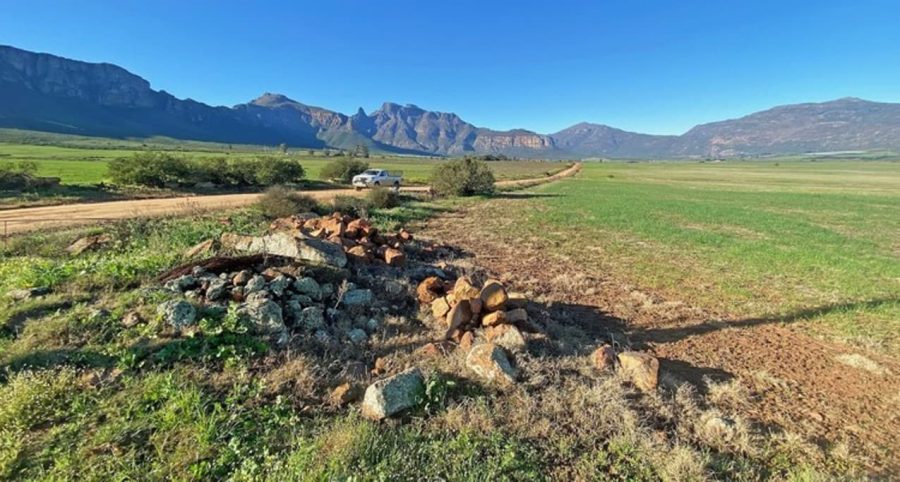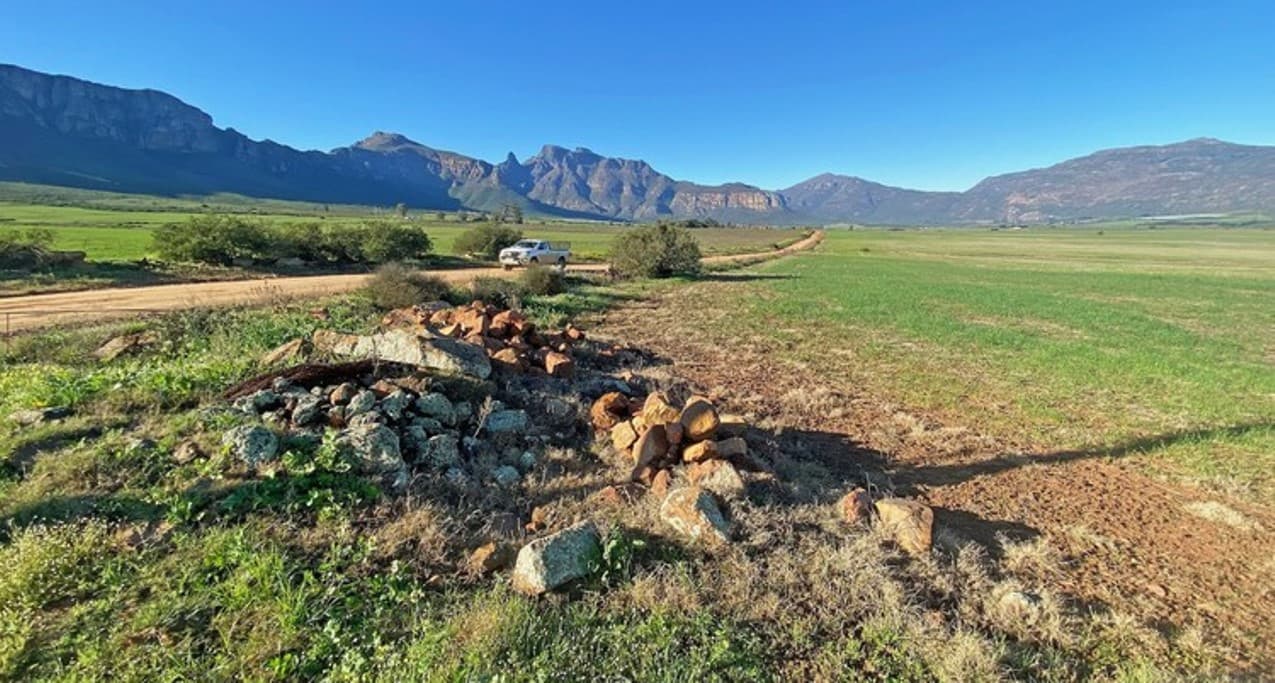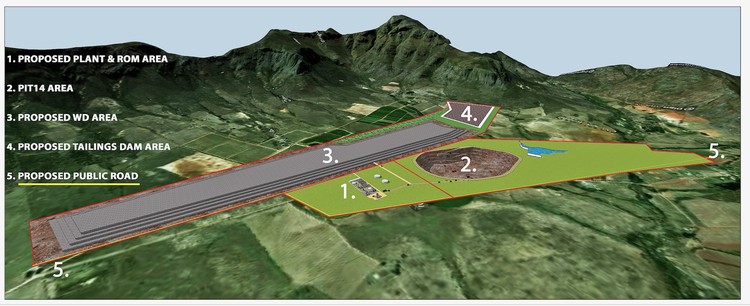
Piketberg landowners block mining company’s access
The latest attempt by a small mining company to get formal approval for a massive open cast tungsten mine in the West Coast region is again before the courts. Since 2004 a small mining company has been seeking approval for a massive opencast tungsten mine near Piketberg. Owners of protected land have blocked the mining […]

The latest attempt by a small mining company to get formal approval for a massive open cast tungsten mine in the West Coast region is again before the courts.
- Since 2004 a small mining company has been seeking approval for a massive opencast tungsten mine near Piketberg.
- Owners of protected land have blocked the mining company’s access to conduct studies required by the Department of Mineral Resources and Energy.
- The company is challenging the proclamation of the area as protected by Western Cape environment MEC Anton Bredell in 2018.
At the centre of the case are three farms being eyed by Somerset West-based Bongani Minerals (Pty) Ltd for its proposed mine. The farms are in the heart of the Moutonshoek valley near Piketberg, within the boundaries of the Moutonshoek Protected Environment (MPE), proclaimed by Western Cape environment MEC Anton Bredell on 25 May 2018 under the National Environmental Management Protected Areas Act.
Also called the Krom Antonies Valley from the river that runs through it, Moutonshoek has a 300-year history of intensive agriculture but remains rich in natural biodiversity and is a crucial water catchment area, including for the nearby Verlorenvlei – a Ramsar wetland site of international importance.
Mining and prospecting are not permitted within a Protected Environment, unless the national Minister of Forestry, Fisheries and the Environment [DFFE], currently Barbara Creecy, grants special consent.
Among a host of other concerns, objectors to the proposed mine argue that the three properties’ Protected Environment status is just one of several so-called “show-stoppers” or “fatal flaws” that, each on their own merits, should be sufficient to immediately stop the mining right application in its tracks.

Bongani Minerals has been attempting since 2004 to obtain mining rights to extract mostly tungsten and molybdenum ore, but also rare earths, copper, zinc, gold, silver, tin, aggregate and sand, from the three farms that total 531 hectares in Moutonshoek.
Its mining proposal includes a 37ha opencast pit, an overburden/waste rock stockpile area of 137ha, and a tailings dam area of about 45ha, with an overall mining footprint of some 217ha once fully operational.
One of the three properties is a champion stud farm owned by Mary Slack, daughter of mining magnate Harry Oppenheimer, and the other two properties are controlled by a major South African commercial fruit farming company, Laeveld Sitrus, that is owned by the Vorster family.
In an application to the Western Cape High Court, Bongani Minerals wants to have Bredell’s proclamation of the Moutonshoek Protected Environment reviewed and set aside. It is also asking for a court order to force the owners of the three farms to allow its staff, environmental experts and any of its agents access to the properties so that they can complete studies required for the adjudication of a mining right by the Department of Mineral Resources and Energy (DMRE).
The mining company argues inter alia that Bredell made the proclamation “at the behest of other role players, in particular the landowners”, and that he had “an ulterior motive or object” in including the farms in the protected environment – “and that object was to purposefully derail [Bongani’s] rights”. He had also not given the company an opportunity to comment on the proposed proclamation, it argues.
Bongani states in court papers that it stands to lose its current approval to apply for a mining right if it’s not able to complete studies for the environmental impact assessment process within the statutory time limits, but that its access to the properties has been blocked.
Replying papers have not yet been filed, but the proposed mine is being strenuously opposed by the landowners and by more than 700 other objectors who include statutory authorities, environmental groups, other property owners in the region and individuals. Most of them have already submitted objections as part of the scoping process that is the first step to obtaining the required Environmental Authorisation (EA) to mine.
There are another 130-odd farms or farm portions covering almost 35,000ha within a ten kilometre radius of the proposed mine, including three that are adjacent or very close to it and that are owned by another major commercial farming company, the Karsten Group, based in Kanoneiland west of Upington along the Orange River.
Cape Town advocate Martin Coetzee, who is representing the Karsten Group and many other objectors, sent his clients an email message this week containing a copy of Bongani’s court application. He wrote: “Between Webbers [law firm Webber Wentzel which is representing some landowners] and myself, we are attending to this on behalf of our clients.”

Bongani Minerals faces a major hurdle before the court will consider hearing its application: the issue of prescription. The prescribed period for bringing a High Court review application is 180 days. Bredell proclaimed and gazetted the Moutonshoek Protected in May 2018, so the prescribed period lapsed in November 2018.
Applying for condonation of the lateness of the application, Lionel Koster, director of Bongani Minerals, declares in his founding affidavit that Bongani only became aware of the proclamation shortly before 30 November last year [2022].
“As far as the fact is concerned that the publication [in the provincial gazette] had already occurred in 2018, [Bongani] was initially completely unaware of the publication. [Bongani] only became aware of the publication when [it] attempted to comply with its duties to obtain the environmental reports, and engaged the experts to gain access to the properties.
“[Bongani] then hoped to resolve the matter amicably and engaged its attorneys, in the hope that the landowners would then grant the necessary consent for access, but to no avail.”
But Koster’s claim is disputed by Coetzee, who told GroundUp it was clear from documentation relating to Bongani’s 2019 mining right application that Bongani, Koster and their environmental consultant, Greenmined, were all aware as early as December 2018 that this proposed mining right application (later terminated) extended over the Moutonshoek Protected Environment.
“It would be more correct so say that Bongani, Greenmined and Koster were in fact personally informed by the National Department on 6 December 2018 of the fact that the Moutonshoek Protected Environment was duly promulgated, as confirmed by Greenmined,” Coetzee said.
“They could/should have brought their application then. They did not. This then should destroy their justification for bringing a review application that is almost five years late in terms of the Court Rules.”
Published originally on Groundup | By John Yeld
